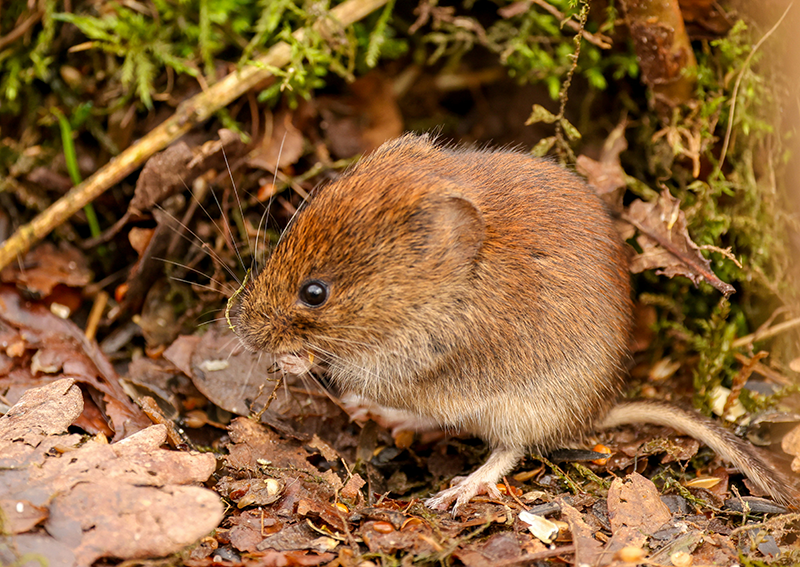Reliable Vole Control Solutions: Handling Vole Pest Issues
Reliable Vole Control Solutions: Handling Vole Pest Issues
Blog Article
Comprehensive Guide to Efficient Vole Pest Control: Problem Identification and Therapy Approaches
In the realm of effective insect control, vole invasions position a distinct obstacle that requires a critical approach. These little rats, frequently mistaken for mice, can ruin yards, lawns, and crops if left untreated. Recognizing the signs of vole visibility and carrying out targeted therapy techniques are vital elements of an effective insect administration strategy. By exploring the subtleties of vole habits, understanding crucial signs of infestation, and evaluating a variety of control options, one can develop a thorough strategy to deal with these evasive pests.
Understanding Vole Behavior
Vole actions is characterized by their burrowing behaviors and rapid recreation rates, making them a difficult pest to control properly. These small rodents usually develop detailed tunnel systems underground, using them for shelter, food storage space, and transport. Voles are herbivores, consuming a selection of plants, grasses, roots, and bulbs, which can cause substantial damages to gardens, orchards, and grass. Their rapid reproductive rate further complicates control initiatives, with ladies with the ability of producing several litters in a single year, each containing numerous children.
Voles are most energetic during the morning and evening hours, investing most of their time foraging for food. Their delving routines not just disturb yards and yards however additionally make them testing to find and remove. Comprehending vole behavior is crucial for efficient pest control strategies. By recognizing their burrow locations, keeping track of feeding areas, and executing targeted control approaches, such as trapping or environment modification, vole problems can be managed successfully.
Indicators of Vole Problem

Prevention Techniques
Carrying out effective prevention techniques is important in lessening vole invasions and protecting plant life from their damaging feeding routines (vole pest control). To avoid vole invasions, it is necessary to begin by getting rid of possible food resources and sanctuary. Maintain yard and greenery trimmed short, eliminate weeds and particles, and preserve a clean yard or yard to make the location less eye-catching to voles. Installing barriers such as hardware fabric or underground fence can also aid hinder voles from entering details locations. In addition, decreasing excess moisture by repairing leaky pipelines right here and ensuring appropriate drain can make the atmosphere much less welcoming for voles.
Consistently examining the residential or commercial property for try this signs of vole activity, such as paths and tunnel openings, is important for very early detection and timely action. If vole task is thought, take into consideration making use of repellents or traps tactically placed near their pathways.
Non-Lethal Control Methods
To successfully take care of vole populations while prioritizing humane approaches, non-lethal control approaches provide useful options for reducing vole damages in landscapes and yards. These barriers can be buried at least 12 inches deep and bent at a 90-degree angle to prevent voles from burrowing underneath.

Lethal Control Options
One efficient approach for addressing vole invasions in landscapes and yards involves the critical use of dangerous control choices. When encountered with a serious vole infestation that non-lethal methods have actually failed to include, applying deadly control steps comes to be important. Overall, when employing deadly control options, it is crucial to do so properly and in accordance with regional regulations to successfully handle vole invasions.
Verdict
Finally, reliable vole parasite control needs a thorough understanding of vole actions, recognition of indications of problem, execution of avoidance strategies, and utilization of both non-lethal and dangerous control approaches. By integrating these strategies, people can successfully take care of vole populations and secure their residential or commercial property from damages. It is essential to attend to vole invasions quickly to avoid more concerns and lessen the effect on the surrounding environment.
Offered the find out this here complex tunnel systems and fast recreation prices particular of voles, identifying the signs of vole problem comes to be important in reliable pest control. One of the primary signs of vole visibility is the presence of surface area runways or trails in grass or snow, generally regarding 1-2 inches vast, created as voles travel between their burrows and food resources.To effectively handle vole populaces while focusing on humane techniques, non-lethal control techniques offer sensible options for lowering vole damages in gardens and landscapes.One reliable approach for resolving vole problems in yards and landscapes includes the tactical use of lethal control choices. vole control.In final thought, effective vole insect control requires an extensive understanding of vole behavior, identification of indications of invasion, implementation of prevention techniques, and usage of both non-lethal and dangerous control approaches
Report this page